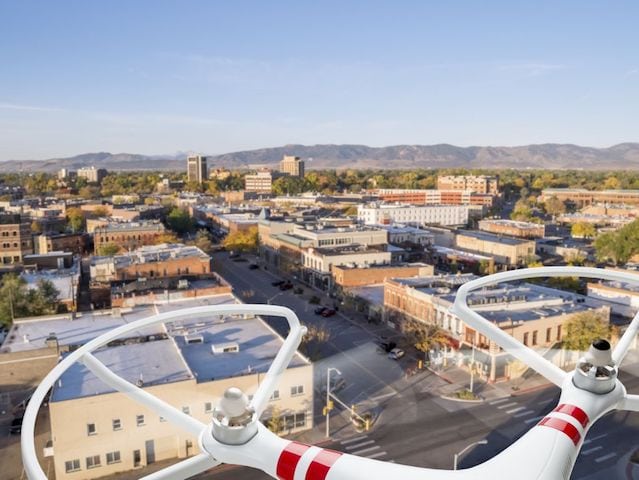
Photo courtesy of Interdrone
A little more than a year after the FAA finalized its small unmanned aircraft systems (UAS) Part 107 rules, 60,000 people have obtained remote pilot certificates. FAA Administrator Michael Huerta gave an update on the agency’s latest progress with integrating small drones into the U.S. national airspace system at the 2017 InterDrone conference in Las Vegas on Wednesday, Sept. 6.
FAA records show more than 80,000 individual drones have been registered for commercial and government operations since August 2016. Examples of new commercial operations include property insurance companies using them to examine damage to homes after storms. A company by the name of Michael Baker International is using DJI Phantoms to create computer 3-D maps of the runways at Atlanta Hartsfield Jackson Airport so that maintenance workers can discover cracks in the runway surface faster. Even UPS is testing the use of drones for emergency medicine delivery from Beverly, Massachusetts, to Children’s Island.
The recent impact of Hurricane Harvey in Texas has also shown the usefulness of drones for assessing severely damaged areas as well. After the impact, the FAA issued 127 authorizations to drone operators to perform search and rescue missions and assess damage to critical infrastructure.
“By the end of last week, we had issued more than 70 authorizations covering a broad range of activities by local, state and federal agencies — and that number will continue to climb,” Huerta said at InterDrone.
The FAA administrator said that the agency now considers the commercial and civilian use of drones to be the “fastest growing field in aviation.”
But Huerta said the agency’s work is far from done, as he believes managing the safe integration of drone technology into the world’s busiest and most complex airspace will be an ongoing process.
“Every time we scratch off an item, we add three more, it seems,” said Huerta.
One of the biggest ongoing problems with the continued influx of drones into commercial airspace is keeping them away from commercial aircraft, which have engines designed to ingest birds, but not metal. According to Huerta, the agency receives an average of “200 drone-sighting reports from pilots each month.”
That includes sightings of drones at altitudes of up to 6,000 feet, despite the FAA’s rules, which, without further authorization, restricts the commercial usage of drones to within the line of sight of the operator and below 400 feet.
In March, Earl Lawrence, the director of the FAA’s UAS integration office briefed the U.S. Senate Committee on Commerce, Science and Transportation that pilots of manned aircraft made 1,800 reports of UAS sightings in restricted airspace in 2016.
Going forward, Huerta sees one of the biggest issues to be the remote identification and tracking of unmanned aircraft.
Currently, the agency is evaluating the results of a field test of drone detection systems at Dallas/Fort Worth International Airport that occurred earlier this year.
The agency wants to develop minimum performance standards for drone detection technology that can eventually be deployed at U.S. airports.
“The work we’re asking the Drone Advisory Committee to undertake complements other work that’s already been done to evaluate technology that might be used to detect drones flying without authorization around airports and other critical infrastructure,” said Huerta.